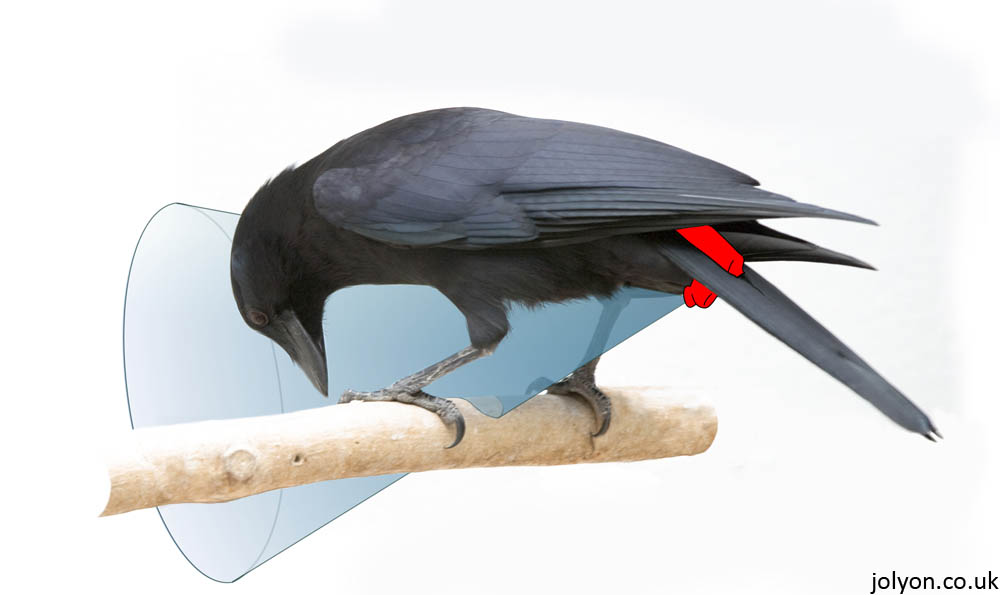publications
Google Scholar Profile, ResearchGate Profile.
Peer-reviewed publications:
2021
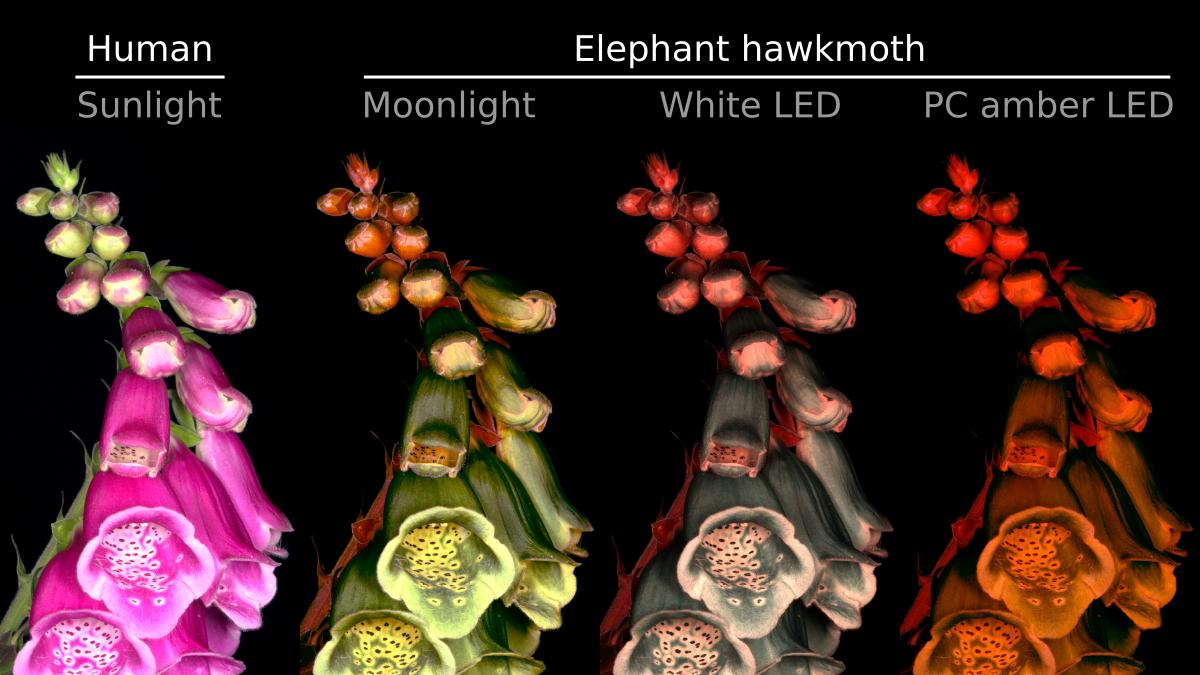 Briolat, E. S., Gaston, K. J., Bennie, J., Rosenfeld, E. J., & Troscianko, J. (2021). Artificial nighttime lighting impacts visual ecology links between flowers, pollinators and predators. Nature Communications, 12(1), 4163. – link (open access) – blog post –
Briolat, E. S., Gaston, K. J., Bennie, J., Rosenfeld, E. J., & Troscianko, J. (2021). Artificial nighttime lighting impacts visual ecology links between flowers, pollinators and predators. Nature Communications, 12(1), 4163. – link (open access) – blog post –
- Massy, R., Hawkes, W. L. S., Doyle, T., Troscianko, J., Menz, M. H. M., Roberts, N. W., Chapman, J. W., & Wotton, K. R. (2021). Hoverflies use a time-compensated sun compass to orientate during autumn migration. Proceedings of the Royal Society B: Biological Sciences, 288(1959), 20211805. – link (open access) –
- Troscianko, J., Nokelainen, O., Skelhorn, J., & Stevens, M. (2021). Variable crab camouflage patterns defeat search image formation. Communications Biology, 4(1), 287. – link (open access) –
- Yong, L., Croft, D. P., Troscianko, J., Ramnarine, I. W., & Wilson, A. J. (2021). Sensory-based quantification of male colour patterns in Trinidadian guppies reveals no support for parallel phenotypic evolution in multivariate trait space. Molecular Ecology. – link (open access) –
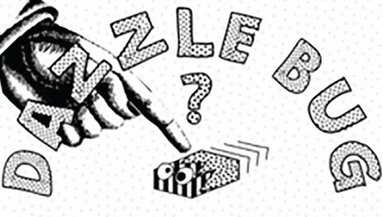 Hughes, A. E., Griffiths, D., Troscianko, J., & Kelley, L. A. (2021). The evolution of patterning during movement in a large-scale citizen science game. Proceedings of the Royal Society B: Biological Sciences, 288(1942), 20202823. – link (open access) – link to play the game –
Hughes, A. E., Griffiths, D., Troscianko, J., & Kelley, L. A. (2021). The evolution of patterning during movement in a large-scale citizen science game. Proceedings of the Royal Society B: Biological Sciences, 288(1942), 20202823. – link (open access) – link to play the game –
-
Šulc, M., Hughes, A.E., Troscianko, J., Štětková, G., Procházka, P., Požgayová, M., Piálek, L., Piálková, R., Brlík, V., & Honza, M. (2021). Automatic Identification of Bird Females Using Egg Phenotype. Zoological Journal of the Linnean Society – link – download PDF –
2020
-
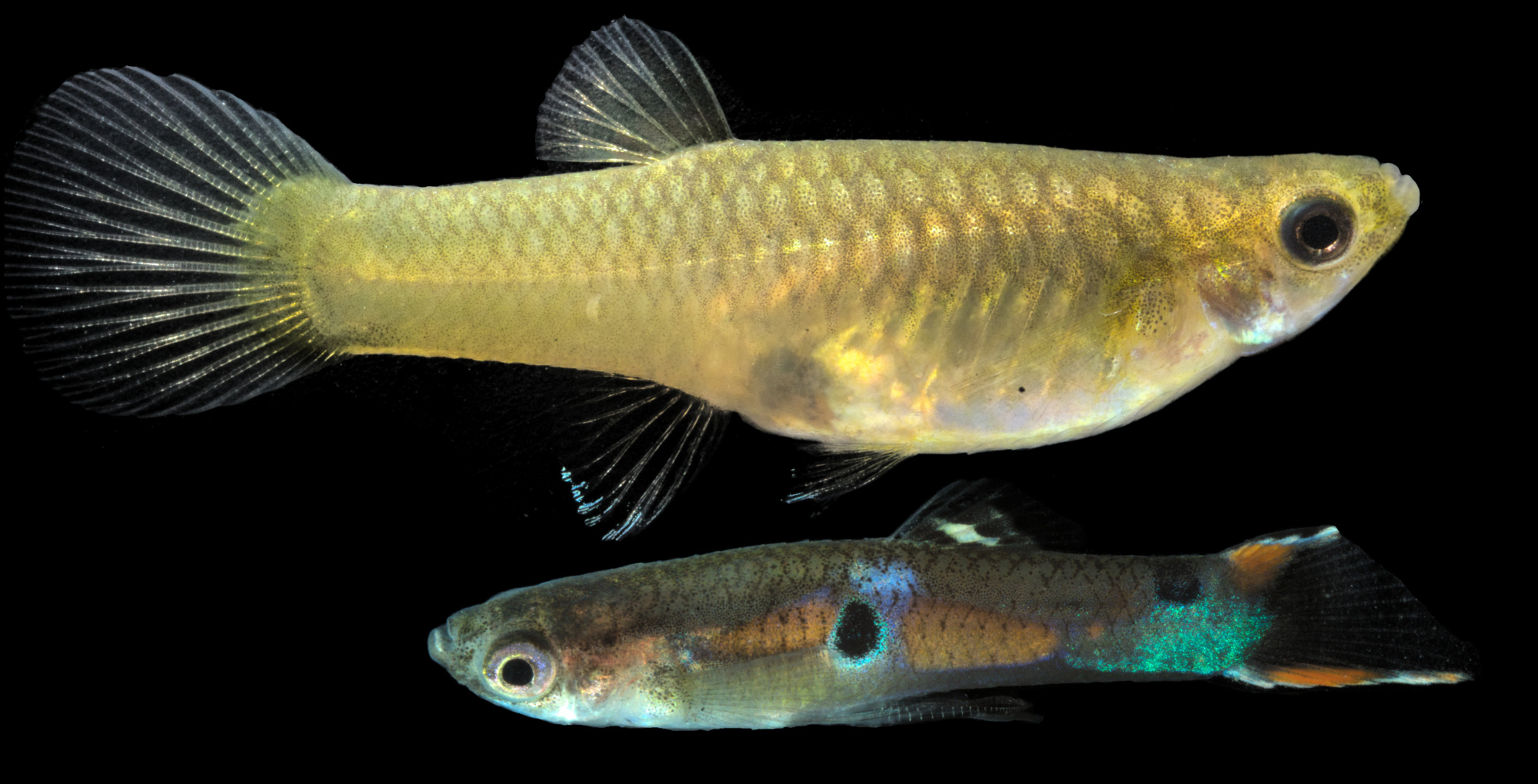 Heathcote, R. J. P., Troscianko, J., Darden, S. K., Naisbett-Jones, L. C., Laker, P. R., Brown, A. M., … Croft, D. P. (2020). A Matador-like Predator Diversion Strategy Driven by Conspicuous Coloration in Guppies. Current Biology, 30, 1–8. – link (open access) –
Heathcote, R. J. P., Troscianko, J., Darden, S. K., Naisbett-Jones, L. C., Laker, P. R., Brown, A. M., … Croft, D. P. (2020). A Matador-like Predator Diversion Strategy Driven by Conspicuous Coloration in Guppies. Current Biology, 30, 1–8. – link (open access) –- Covered by: Daily Mail, IFL Science, The Science Times.
- Caves, E. M., Troscianko, J., & Kelley, L. A. (2020). A customizable, low-cost optomotor apparatus: a powerful tool for behaviourally measuring visual capability. Methods in Ecology and Evolution, doi:10.1111/2041-210X.13449 – link (open access) – user guide –
- Jamie, G.A., Van Belleghem, S.M., Hogan, B.G., Hamama, S., Moya, C., Troscianko, J., Stoddard, M.C., Kilner, R.M., & Spottiswoode, C.N. 2020. ‘Multimodal Mimicry of Hosts in a Radiation of Parasitic Finches’. Evolution. https://doi.org/10.1111/evo.14057. – link (open access) –
-
Young, M. M. I., Winters, S., Young, C., Weiß, B. M., Troscianko, J., Ganswindt, A., … Widdig, A. (2020). Male characteristics as predictors of genital color and display variation in vervet monkeys. Behavioral Ecology and Sociobiology, 74(2), 14. – link (open access) –
-
 van den Berg, C. P.*, Troscianko, J.* (*joint first authors), Endler, J. A., Marshall, N. J., & Cheney, K. L. (2020). Quantitative Colour Pattern Analysis (QCPA): A comprehensive framework for the analysis of colour patterns in nature. Methods in Ecology and Evolution, 11(2): 316-332 – link (open access) – user guide & community website –
van den Berg, C. P.*, Troscianko, J.* (*joint first authors), Endler, J. A., Marshall, N. J., & Cheney, K. L. (2020). Quantitative Colour Pattern Analysis (QCPA): A comprehensive framework for the analysis of colour patterns in nature. Methods in Ecology and Evolution, 11(2): 316-332 – link (open access) – user guide & community website –- Covered by Sydney Morning Herald, Daily Mail, Cosmos, Science Blog
2019
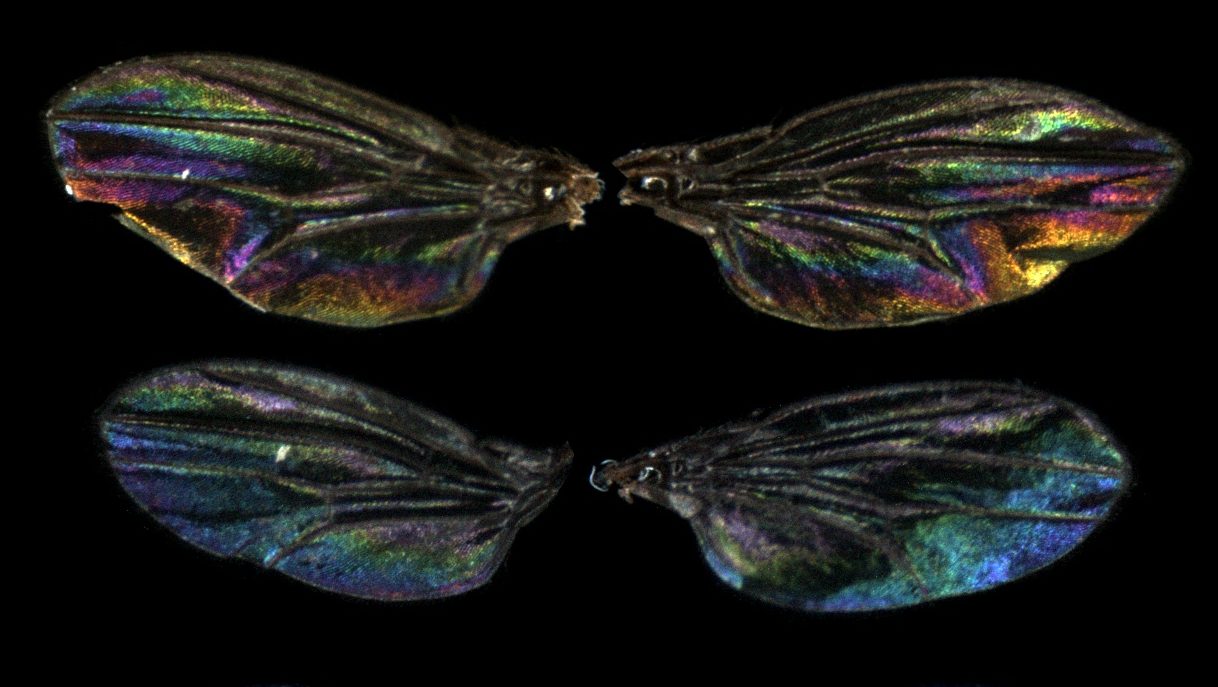 Hawkes M. F., Duffy E., Joag R., Skeats A., Radwan J., Wedell N., Sharma M. D., Hosken D. J., Troscianko J. (2019). Sexual selection drives the evolution of male wing interference patterns. Proceedings of the Royal Society B: Biological Sciences, 286(1903), 20182850. – download PDF – link –
Hawkes M. F., Duffy E., Joag R., Skeats A., Radwan J., Wedell N., Sharma M. D., Hosken D. J., Troscianko J. (2019). Sexual selection drives the evolution of male wing interference patterns. Proceedings of the Royal Society B: Biological Sciences, 286(1903), 20182850. – download PDF – link –
- Price, N., Green, S., Troscianko, J., Tregenza, T., & Stevens, M. (2019). Background matching and disruptive coloration as habitat-specific strategies for camouflage. Scientific Reports, 9(1), 7840. – link (open access) –
- Šulc, M., Troscianko, J., Štětková, G., Hughes, A. E., Jelínek, V., Capek, M., & Honza, M. (2019). Mimicry cannot explain rejection type in a host–brood parasite system. Animal Behaviour, 155, 111–118. – link – download PDF –
- Dell’Aglio, D. D., Troscianko, J., McMillan, W.O., Stevens, M., Jiggins, C.D. (2019). The appearance of mimetic Heliconius butterflies to predators and conspecifics. Evolution 72(10): 2156-2166- link – download PDF –
2018
- Troscianko, J., Skelhorn, J., Stevens, M. (2018) Camouflage strategies interfere differently with observer search images. Proceedings of the Royal Society B 285(1886): 20181386 – link (open access) –
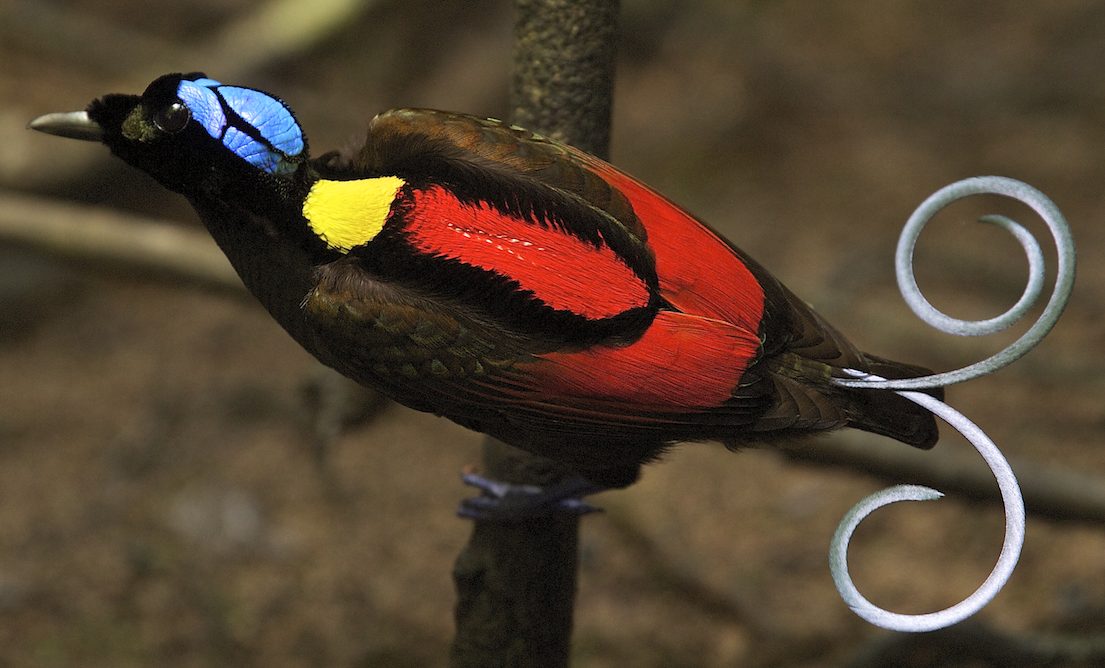 Ligon, R. A., Diaz, C. D., Morano, J. L., Troscianko, J. Stevens, M., Moskeland, A., Laman, T. G., & Scholes, E. III. (2018). Evolution of correlated complexity in the radically different courtship signals of birds-of-paradise. PLOS Biology. 16(11): e2006962 – link (open access) – blog post –
Ligon, R. A., Diaz, C. D., Morano, J. L., Troscianko, J. Stevens, M., Moskeland, A., Laman, T. G., & Scholes, E. III. (2018). Evolution of correlated complexity in the radically different courtship signals of birds-of-paradise. PLOS Biology. 16(11): e2006962 – link (open access) – blog post –
- Heathcote, R.J.P., Darden, S.K., Troscianko, J., Lawson, M.R.M., Brown, A.M., Laker, P.R., Naisbett-Jones, L.C., MacGregor, H.E.A., Ramnarine, I., & Croft, D.P. (2018). Dynamic Eye Colour as an Honest Signal of Aggression. Current Biology 28 (11): R652–53. – link – download PDF –
- Covered by Science, The Daily Mail, The Sydney Morning Herald, ZME Science.
- Holmes, G.G., Delferrière, E., Rowe, C., Troscianko, J., & Skelhorn, J. (2018). Testing the Feasibility of the Startle-First Route to Deimatism. Scientific Reports 8 (1): 10737. – link (open access) –
- Gómez, J., Ramo, C., Stevens, M., Liñán‐Cembrano, G., Rendón, M. A., Troscianko, J. T., & Amat, J. A. (2018). Latitudinal variation in biophysical characteristics of avian eggshells to cope with differential effects of solar radiation. Ecology and Evolution. – link – download PDF –
- Gómez, J., Ramo, C., Troscianko, J., Stevens, M., Castro, M., Pérez-Hurtado, A., Liñán-Cembrano, G., and Amat, J.A. (2018). Individual egg camouflage is influenced by microhabitat selection and use of nest materials in ground-nesting birds. Behavioural Ecology & Sociobiology 72, 142. – link – download PDF –
-
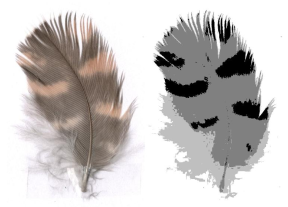 Koleček, J., Šulc, M., Piálková, R., Troscianko, J., Požgayová, M., Honza, M., and Procházka, P. (2018). Rufous Common Cuckoo chicks are not always female. Journal of Ornithology. – link – download PDF –
Koleček, J., Šulc, M., Piálková, R., Troscianko, J., Požgayová, M., Honza, M., and Procházka, P. (2018). Rufous Common Cuckoo chicks are not always female. Journal of Ornithology. – link – download PDF –
2017
- Stevens, M., Troscianko, J., Wilson-Aggarwal, J.K. & Spottiswoode, C.N. (2017). Improvement of individual camouflage through background choice in ground-nesting birds. Nature Ecology & Evolution, 1, 1325. – link (open access) – download PDF –
- Covered by The Telegraph, The Daily Mail, Science Daily, International Business Times, Cosmos, See press release.
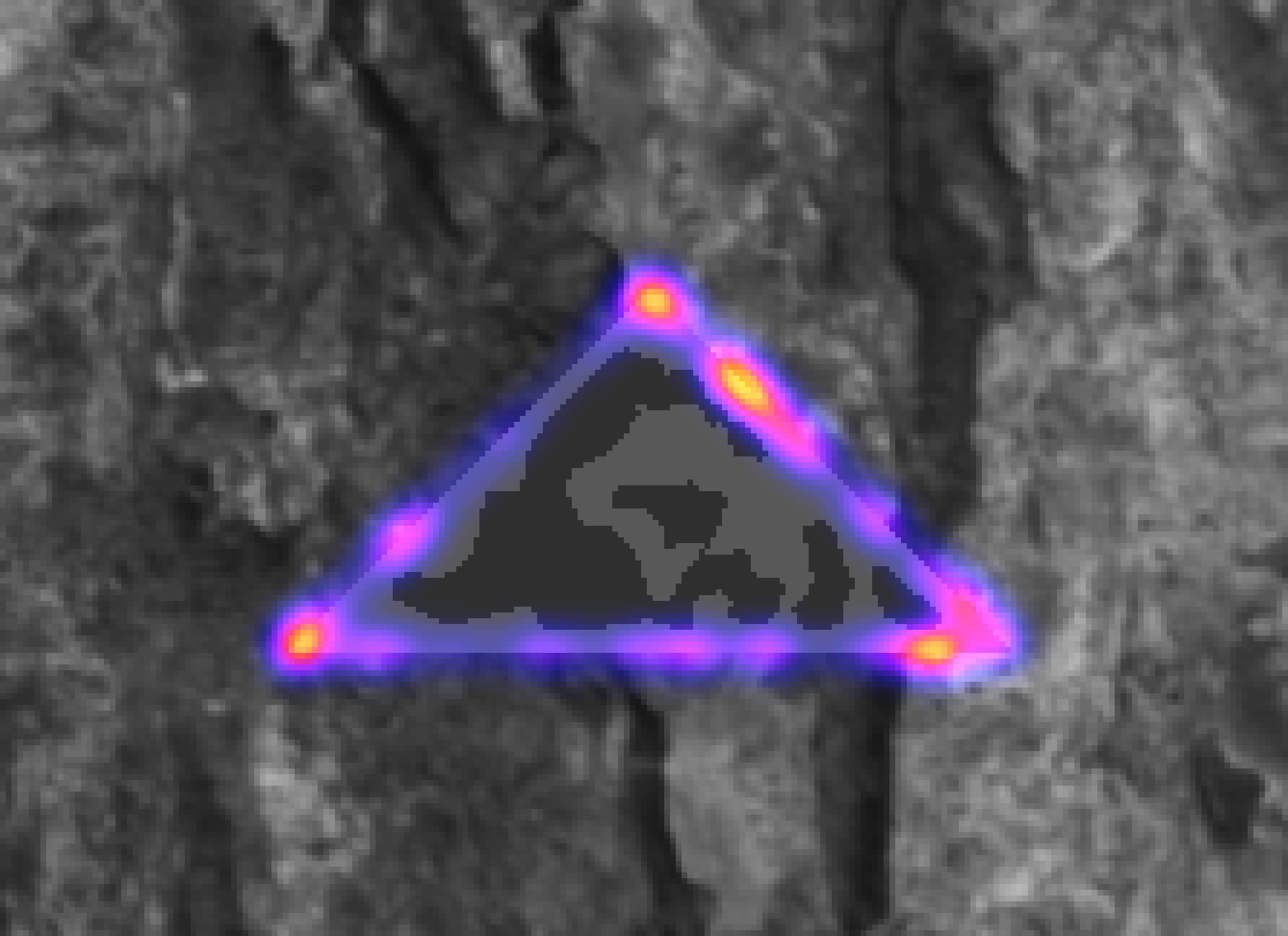 Troscianko J., Skelhorn, J., & Stevens M. (2017). Quantifying camouflage: how to predict detectability from appearance. BMC Evolutionary Biology. 17:7. – link (open access) – Blog Post –
Troscianko J., Skelhorn, J., & Stevens M. (2017). Quantifying camouflage: how to predict detectability from appearance. BMC Evolutionary Biology. 17:7. – link (open access) – Blog Post –
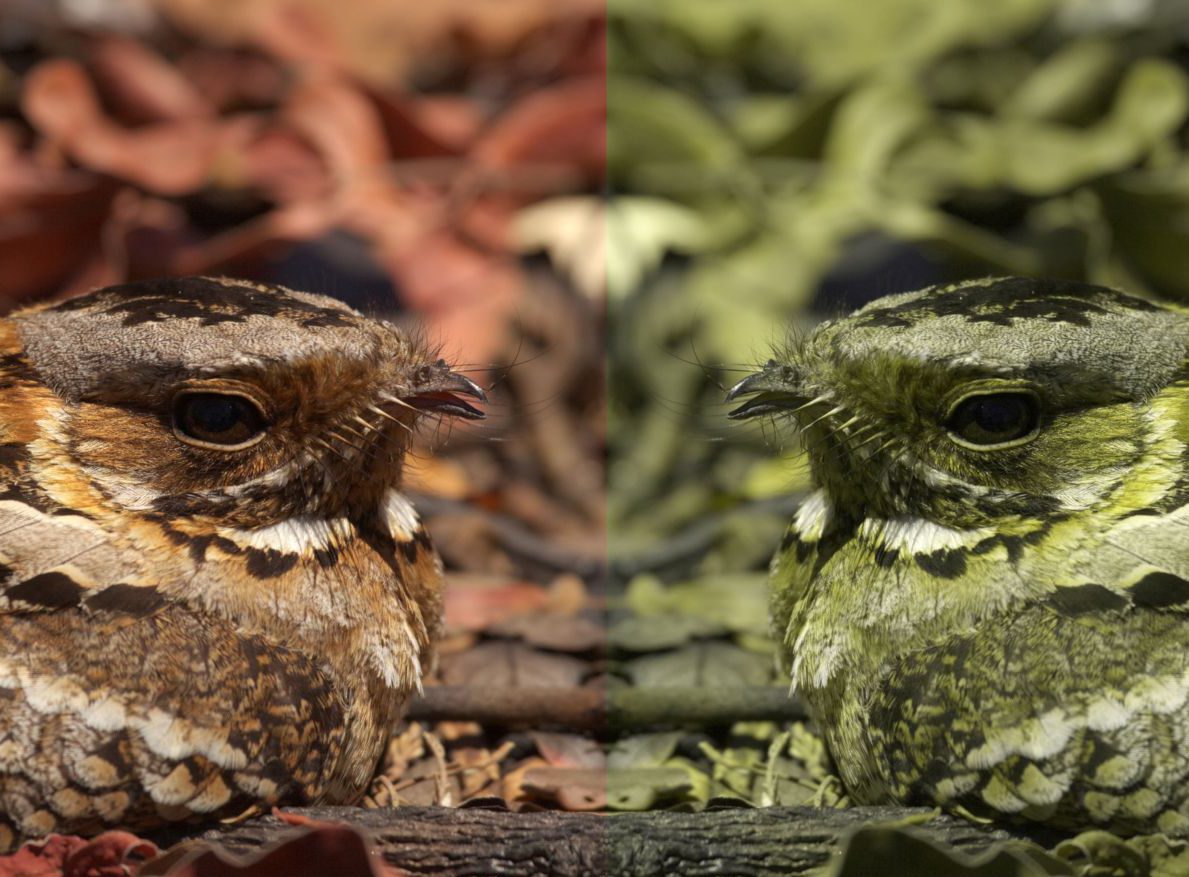 Troscianko J., Wilson-Aggarwal J., Griffiths D., Spottiswoode C.N. & Stevens M. (2017). Relative advantages of dichromatic and trichromatic color vision in camouflage breaking. Behavioral Ecology 28:556-564. – link (open access) – Blog Post –
Troscianko J., Wilson-Aggarwal J., Griffiths D., Spottiswoode C.N. & Stevens M. (2017). Relative advantages of dichromatic and trichromatic color vision in camouflage breaking. Behavioral Ecology 28:556-564. – link (open access) – Blog Post –
- Reuters made a short video covering this research (here).
- Koski, T-M, Lindstedt, C, Klemola, T, Troscianko, J, Mäntylä, E, Tyystjärvi, E, Stevens, M, Helander, M, Laaksonen, T. (2017). Insect herbivory may cause changes in the visual properties of leaves and affect the camouflage of herbivores to avian predators. Behavioral Ecology and Sociobiology. 71:97 – link – download PDF –
- Abernathy, V.E., Troscianko, J. & Langmore, N.E. (2017). Egg mimicry by the pacific koel: mimicry of one host facilitates exploitation of other hosts with similar egg types. Journal of Avian Biology. 48:11 1414-1424 – link – download PDF –
- Robledo-Ospina L.E., Escobar-Sarria F. Troscianko J., & Rao D. (2017). Two ways to hide: predator and prey perspective of disruptive colouration and background matching in jumping spiders. Biological Journal of the Linnean Society blx108 – link –
2016
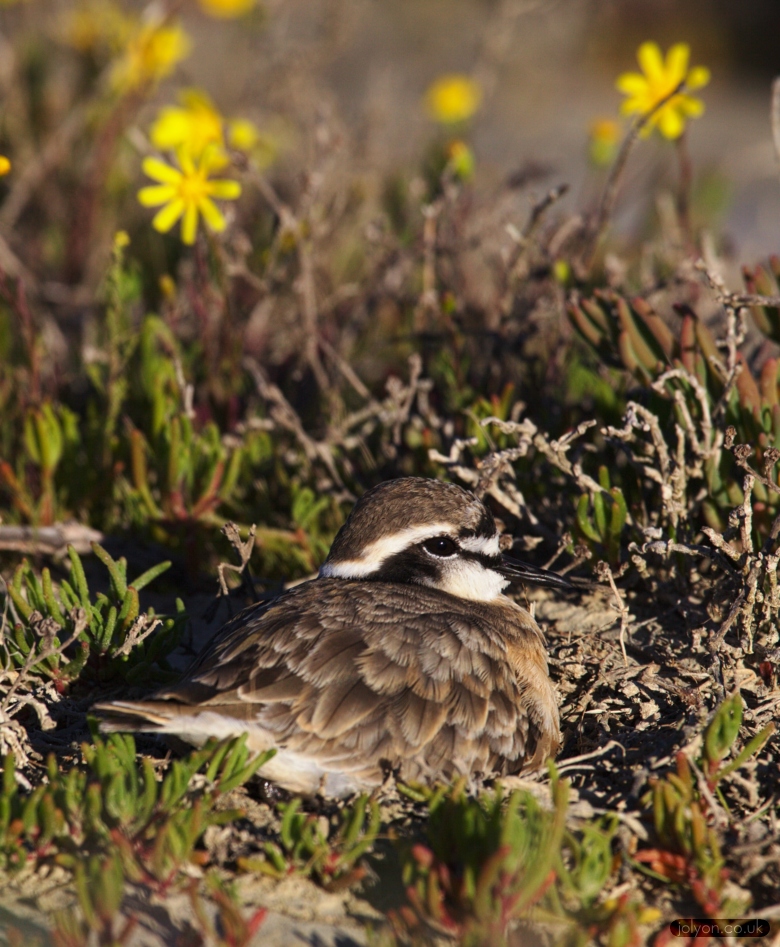 Troscianko J., Wilson-Aggarwal J., Spottiswoode, C.N. & Stevens, M. (2016). Nest covering in plovers: how modifying the visual environment influences egg camouflage. Ecology and Evolution 10.1002/ece3.2494 – link (open access) – Blog Post –
Troscianko J., Wilson-Aggarwal J., Spottiswoode, C.N. & Stevens, M. (2016). Nest covering in plovers: how modifying the visual environment influences egg camouflage. Ecology and Evolution 10.1002/ece3.2494 – link (open access) – Blog Post –
- Troscianko J., Wilson-Aggarwal J., Stevens, M. & Spottiswoode, C.N. (2016). Camouflage Predicts Survival in Ground-Nesting Birds. Scientific Reports 6:19966. – link (open access) – Blog Post –
- Covered by: BBC discover wildlife magazine, and The Daily Mail.
-
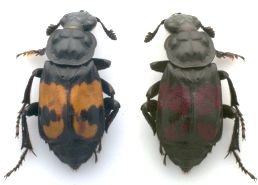 De Gasperin O., Duarte A., Troscianko J. & Kilner R.M. (2016). Fitness costs associated with building and maintaining the burying beetle’s carrion nest. Scientific Reports, 6, 35293. – link (open access) – Blog Post –
De Gasperin O., Duarte A., Troscianko J. & Kilner R.M. (2016). Fitness costs associated with building and maintaining the burying beetle’s carrion nest. Scientific Reports, 6, 35293. – link (open access) – Blog Post –
-
Medina, I., Troscianko, J., Stevens, M., Langmore, N.E., Brodie, E.D., and Michalakis, Y. (2016). Brood Parasitism Is Linked to Egg Pattern Diversity within and among Species of Australian Passerines. The American Naturalist 6:1320-1331. – link – download PDF –
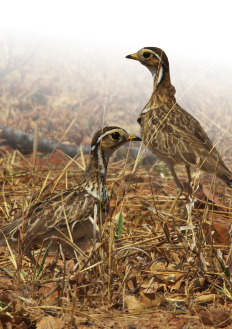
- Wilson-Aggarwal J., Troscianko, J., Stevens, M. & Spottiswoode, C.N. (2016). Escape distance in ground-nesting birds differs with individual level of camouflage. The American Naturalist – link (open access) – Blog Post –
2015
- Troscianko, J. & Rutz, C. (2015). Activity profiles and hook-tool use of New Caledonian crows recorded by bird-borne video cameras. Biology Letters
- Covered by New Scientist, The BBC, The LA Times, The Washington Post, Discovery, The Daily Mail, The Seattle Times, The Christian Science Monitor, UPI, Western Morning News, Phys.org, and many more. I was also interviewed on BBC Radio Devon, and BBC Radio Cornwall.
- Stevens, M., Broderick, A.C., Godley, B.J., Lown, A.E., Troscianko, J., Weber, N., and Weber, S.B. (2015). Phenotype–environment matching in sand fleas. Biology Letters 11: 20150494. – link (open access) – Blog Post –
- Covered by Phys.org.
- Covered by Phys.org.
 Troscianko, J., and Stevens, M. (2015). Image Calibration and Analysis Toolbox – a free software suite for objectively measuring reflectance, colour and pattern. Methods Ecology and Evolution 6:1320-1331. – link (open access) – download PDF – download toolbox and guide –
Troscianko, J., and Stevens, M. (2015). Image Calibration and Analysis Toolbox – a free software suite for objectively measuring reflectance, colour and pattern. Methods Ecology and Evolution 6:1320-1331. – link (open access) – download PDF – download toolbox and guide –
- Covered by The Washington Post, The Independent, Phys.org, The Daily Mail, FirstSlice, Gizmodo, PetaPixel, TreeHugger, Mother Nature Network, Gizmag, E&T, Tech Times, Photonics, and many more.
- Burriss, R.P., Troscianko, J., Lovell, P.G., Fulford, A.J.C., Stevens, M., Quigley, R., Payne, J., Saxton, T.K., and Rowland, H.M. (2015). Changes in Women’s Facial Skin Color over the Ovulatory Cycle are Not Detectable by the Human Visual System. PLoS ONE 10, e0130093. – link (open access) –
- Covered by Live Science, Health Day, Business Standard, Huffington Post, and more.
- Feeney, W.E., Troscianko, J., Langmore, N.E., & Spottiswoode, C.N. (2015). Evidence for aggressive mimicry in an adult brood parasitic bird, and generalized defences in its host. Proceedings of the Royal Society B: Biological Sciences. 282, 20150795. – link (open access) – download PDF –
- Covered by Nature, EurekAlert, IFLScience, myScience, Phys.org, ScienceDaily,The Conversation.
2014
- Hughes, A. E., Troscianko, J., & Stevens, M. (2014). Motion Dazzle and the Effects of Target Patterning on Capture Success. BMC Evolutionary Biology 14 (1): 201. – link – download PDF –
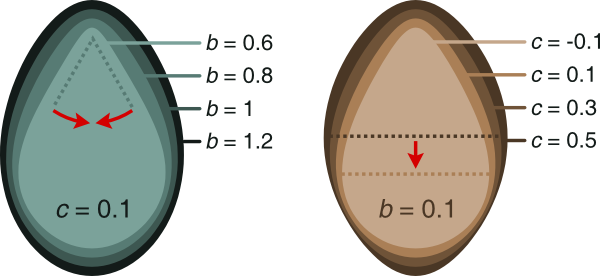 Troscianko, J. (2014). A Simple Tool for Calculating Egg Shape, Volume and Surface Area from Digital Images. Ibis 156 (4): 874–878. – link – download PDF – download measurement script –
Troscianko, J. (2014). A Simple Tool for Calculating Egg Shape, Volume and Surface Area from Digital Images. Ibis 156 (4): 874–878. – link – download PDF – download measurement script –
- Arenas, L.M., Troscianko, J., Stevens, M. (2014). Color contrast and stability as key elements for effective warning signals. Frontiers in Ecology and Evolution 2:25. – link – download PDF –
2013
- Stevens, M. Troscianko, J. Spottiswoode, C. N. (2013). Repeated targeting of the same hosts by a brood parasite compromises host egg rejection. Nature Communications 4(2475). – link – download PDF –
- Covered by the BBC , New York Times and Wired.
- Troscianko, J, Lown, A. E., Hughes, A. E., Stevens, M. (2013). Defeating Crypsis: Detection and Learning of Camouflage Strategies. PLoS One. 8(9): e73733. – link – download PDF –
- Covered by NewScientist, and highlighted on their home page.
- Stevens, M., Marshall, K.L.A., Troscianko, J., Finlay, S., Burnand, D. & Chadwick, S.L. (2013). Revealed by conspicuousness: distractive markings reduce camouflage. Behavioural Ecology. 4: 213-222. – download PDF –
- Stevens, M., Troscianko, J., Marshall, K.L. & Finlay, S. (2013). What is camouflage through distractive markings? A reply to Merilaita et al.(2013). Behavioral Ecology, 24, e1272–e1273. – link –
- Rutz, C., & Troscianko, J. (2012). Programmable, miniature video-loggers for deployment on wild birds and other wildlife. Methods in Ecology and Evolution. 4: 114–122. – download PDF –
- Troscianko, J., von Bayern, A.M.P., Chappell, J., Rutz, C. & Martin, G.R. (2012). Extreme binocular vision and a straight bill facilitate tool use in New Caledonian crows. Nature communications. 3: 1110. – download PDF –
2010
- Rutz, C., Bluff, L.A., Reed, N., Troscianko, J., Newton, J., Inger, R., Kacelnik, A. & Bearhop, S. (2010). The ecological significance of tool use in New Caledonian crows. Science. 329: 1523-1526. – download PDF –
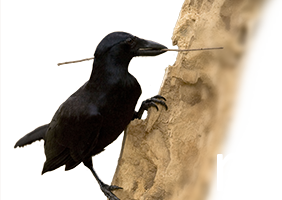 Bluff, L. A., Troscianko, J., Weir, A. A. S., Kacelnik, A. & Rutz, C. (2010). Tool use by wild New Caledonian crows Corvus moneduloides at natural foraging sites. Proceedings of the Royal Society B: Biological Sciences. 277: 1377-1385. – download PDF –
Bluff, L. A., Troscianko, J., Weir, A. A. S., Kacelnik, A. & Rutz, C. (2010). Tool use by wild New Caledonian crows Corvus moneduloides at natural foraging sites. Proceedings of the Royal Society B: Biological Sciences. 277: 1377-1385. – download PDF –
2009
- Takahashi, T., McDougall, C., Troscianko, J., Chen, W. C., Jayaraman-Nagarajan, A., Shimeld, S. M. & Ferrier, D. E. K. (2009). An EST screen from the annelid Pomatoceros lamarckii reveals patterns of gene loss and gain in animals. BMC Evolutionary Biology. 9: 240. – download PDF –
2008
- Troscianko, J., Bluff, L. A. & Rutz, C. (2008). Grass-stem tool use in New Caledonian Crows Corvus moneduloides. Ardea. 96: 283-285. – download PDF –
2005
- Lovell, P. G., Tolhurst, D. J., Parraga, C. A., Baddeley, R., Leonards, U. & Troscianko, J. (2005). Stability of the color-opponent signals under changes of illuminant in natural scenes. Journal of the Optical Society of America, A. 22: 2060-2071. – download PDF –
- Lovell, P. G., Tolhurst, D. J., Parraga, C. A., Baddeley, R. J., Leonards, U., Troscianko, J. & Troscianko, T. (2005). Opponent channel responses to changes in the illuminant of natural scenes for primates and birds. Perception 34: 59.
2003
- Troscianko, T., Parraga, C. A., Leonards, U., Baddeley, R. J., Troscianko, J. & Tolhurst, D. J. (2003). Leaves, fruit, shadows, and lighting in kibale forest, Uganda. Perception 32: 51.
- Parraga, C.A., Troscianko, T., Troscianko, J., Tolhurst, D.J., and Leonards, U. (2003). Spatiochromatic Properties of Images of Fruits and Leaves from Kibale Forest, Uganda. Journal of Vision 3 (9): 315–315.
PhD Thesis
Troscianko, J. (2012). Ecological, morphological and behavioural aspects of tool-use in New Caledonian crows. Please email me if you’d like a copy – address below
Other Publications
Troscianko, J. (2017). Ornithological Masterclass: Camouflage and Survival, BTO News 323, pp16-19.





